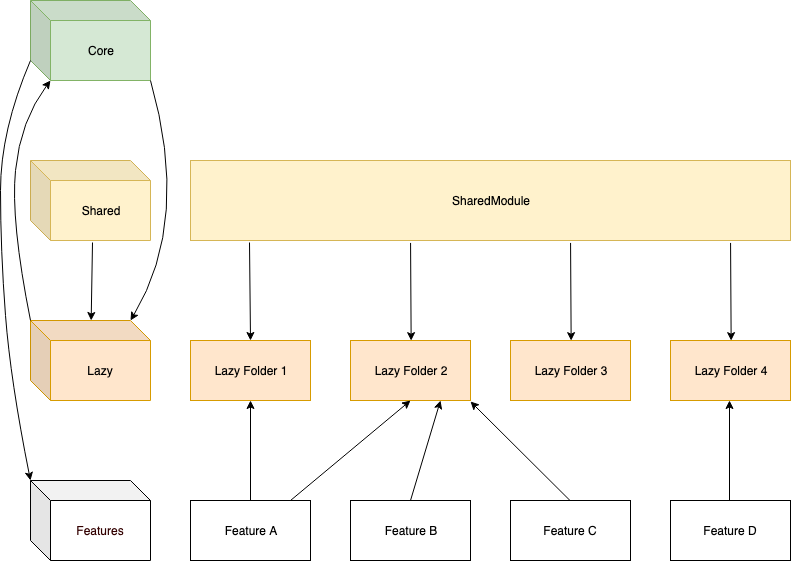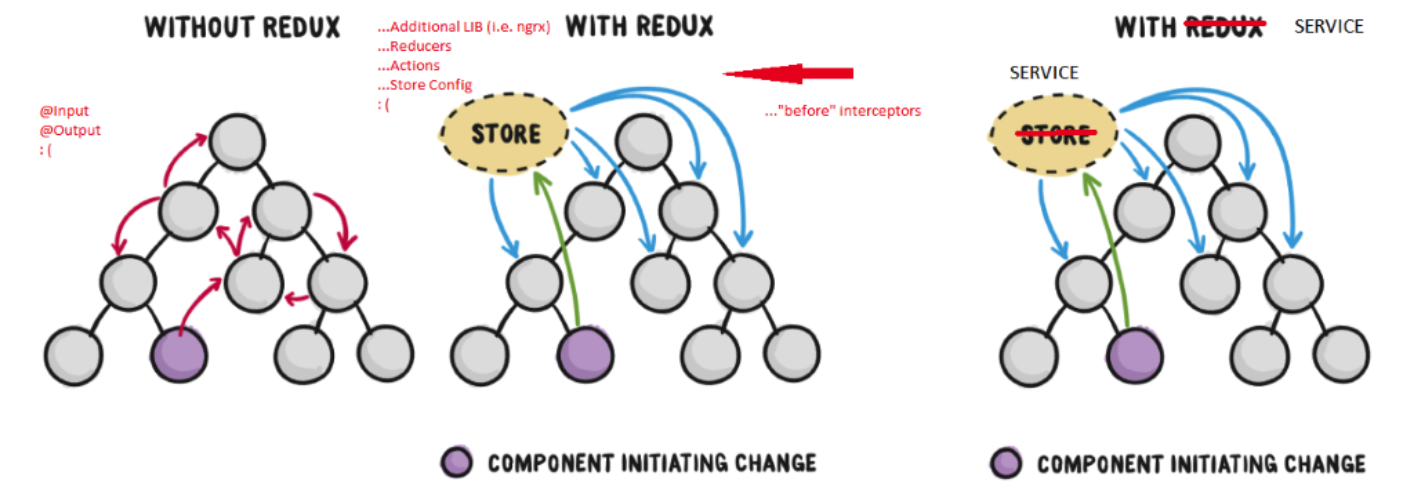This project is created for Angular 8+.
...To not to reinvent the wheel again.
- Simplify Getting Started - interactive dialog or @schematics
- TSLint settings
- UIkit, Style Guide or Storybook
- Auto
ng build --prodattached on Git/Husky hook "pre-push" to avoid some of build failures during a deployment of the app. - Common SCSS files in
src/styles. - Extendable abstract AppController in
src/app/app.controller.ts. - Proxying by
proxy.conf.jsononnpm start. - Webpack Bundle Analyzer on
npm run analyzer. - ApiInterceptor in
src/app/core/interceptors/api.interceptor.tsto:
- set base API url taken from
src/environmentsdirectory - set recommended HTTP headers (security)
src/lib/js/modernizr-touch-events.jsindicates if the browser supports the W3C Touch Events API.- Auto-refreshing the browser tab title on route change (see
src/app/app.component.ts) - .htaccess (Apache) and web.config (IIS) configuring the server to return the application's host page (index.html) when asked for a file that it does not have.
git clonethis repo.npm install- Remove the contents of
src/assets/images/contents. - Put your translations in
src/translationsand set them insrc/app/app.controller.ts. - Add your custom core configuration in
src/app/core/config/app-config.const.ts(you will need it in the future). - Add your router config in
src/app/core/config/router-config.const.ts. - Remove
proxy.conf.jsonif you don't need proxying. Otherwise, put your target there. npm startcallsng serve --proxy-config=proxy.conf.jsonfrompackage.json(remove 6th line frompackage.jsonif you don't need proxying).- Set your project name in
package.json: lines 2nd and 12th. - Set your API urls in
src/environments. - Replace the default Angular favicon with yours.
- Verify whether you need
web.config(IIS) or.htaccess(Apache) insrcandangular.json(projects>architect>build>options>assets). If you needweb.config, verify security headers in the file. - You are ready to work.
ng build --configuration=production or ng build --prod
ng build --configuration=dev
ng build --configuration=stage
ng build --configuration=uat
npm run analyzer
Always keep your project directories neat and clean so that your project does not become another legacy monster from which you will want to escape ASAP.
Notice. This document uses the shortcut ASG (:smile:) - Angular Style Guide.
The directories you always need:
- App.
- Environments.
- Assets.
- Test.
- Lib.
- Styles.
- Translations.

The directories you always need:
- Core.
- Shared.
- Features.
- Lazy (lazy loaded folders).

The class that some of your components will need to extend: AppController. It stores:
- public configuration and settings,
- router data,
- current translations.

"MUST-HAVE" of your application:
- configurations and settings of your application, i.e. available languages and locales, routing data, web storage keys, date format,
- global services, i.e. http,
- a skeleton of the layout - core components like header and footer,
- core modules, i.e. dialog.
From ASG (https://angular.io/guide/styleguide#shared-feature-module):
Do create a feature module named SharedModule in a shared folder; for example, app/shared/shared.module.ts defines SharedModule.
Do declare components, directives, and pipes in a shared module when those items will be re-used and referenced by the components declared in other feature modules.
Consider using the name SharedModule when the contents of a shared module are referenced across the entire application.
Consider not providing services in shared modules. Services are usually singletons that are provided once for the entire application or in a particular feature module. There are exceptions, however. For example, in the sample code that follows, notice that the SharedModule provides FilterTextService. This is acceptable here because the service is stateless;that is, the consumers of the service aren't impacted by new instances.
Do import all modules required by the assets in the SharedModule; for example, CommonModule and FormsModule.
(...)
Avoid specifying app-wide singleton providers in a SharedModule. Intentional singletons are OK. Take care.
Why? A lazy loaded feature module that imports that shared module will make its own copy of the service and likely have undesirable results.
Why? You don't want each module to have its own separate instance of singleton services. Yet there is a real danger of that happening if the SharedModule provides a service.
From ASG (https://angular.io/guide/styleguide#folders-by-feature-structure):
(...)
Why? Helps reduce the app from becoming cluttered through organizing the content and keeping them aligned with the LIFT guidelines.
Why? When there are a lot of files, for example 10+, locating them is easier with a consistent folder structure and more difficult in a flat structure.
From ASG (https://angular.io/guide/styleguide#lazy-loaded-folders):
A distinct application feature or workflow may be lazy loaded or loaded on demand rather than when the application starts.
Do put the contents of lazy loaded features in a lazy loaded folder. A typical lazy loaded folder contains a routing component, its child components, and their related assets and modules.
Why? The folder makes it easy to identify and isolate the feature content.
(...)
Avoid allowing modules in sibling and parent folders to directly import a module in a lazy loaded feature.
Why? Directly importing and using a module will load it immediately when the intention is to load it on demand.
Avoid having multiple config files per module (*.const.ts).
ASG: Why? No one wants to search for a file through seven levels of folders. A flat structure is easy to scan.
ASG: Do start small but keep in mind where the app is heading down the road.
ASG: Do have a near term view of implementation and a long term vision.
Consider using Server Side Rendering.
Consider creating your features in a separated "environment" like Storybook as an element of your Design System.
Consider putting info about your styles and components in a separated module (a'la old good UI-kit) to be DRY and KISS, and to help other developers understand application CSS styles set.
Consider proxying to a backend server to be "locally" independent of your API (https://angular.io/guide/build#proxying-to-a-backend-server).
Consider using services and rxjs subjects to interact between components instead of libraries like ngrx, ngxs or akita.
Why? I know those libraries are trendy and fancy, however you may experience problems regarding state management only in the case of huge, complex or unusual applications. Read more here.
I'm not the author of this picture.
Do create dumb components - no external dependencies, no side effects. Read more here.
I'm not the author of this picture.
Remember about the performance:
- Runtime optimizations.
- Network performance.
Please refer to https://github.com/mgechev/angular-performance-checklist
Read https://christianlydemann.com/the-complete-guide-to-angular-load-time-optimization

